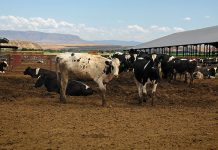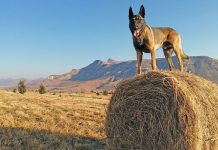“Most Swazis living on rural smallholdings are subsistence farmers, livestock herders or migrate to jobs or small-scale trading opportunities elsewhere,” confirms John Weatherson, the United Nations (UN) Food and Organisation (FAO’s) emergency coordinator. “Severe droughts in the last five seasons left these people without the resources to take advantage of good rains in the 2007/08 season.”
Small wonder international organisations such as the FAO, the European Commission’s Directorate-General for Humanitarian Aid, NGOs such as the Italian Cooperation for the Development of Emerging Countries (COSPE) and governments such as those of South Africa and the Netherlands have launched programmes to promote Conservation Agriculture (CA) and providing food aid to some 450 000 Swazis with input-purchasing vouchers to deserving farmers at multiple Input Trade Fairs.
CA in Swaziland aims to develop sustainable, low-input farming while reducing soil erosion, retaining moisture and enhancing soil structure and microbial life. “We’re proactively promoting and supporting CA,” says Ministry of Agriculture and Cooperatives (MoAC) director of agriculture George Ndlangamandla. “We haven’t adopted it as national policy, but it’s only a matter of time. haven’t mastered it yet, but the efforts of the likes of FAO and COSPE have demonstrated its considerable benefits and we’d like to see it throughout the country. We could have achieved more if we could limit or stop livestock grazing crop residue on CA lands in winter, as a result of overgrazing of the veld in summer. “We’re building dams in drought-prone areas to create more irrigation schemes, with the help of the International Fund for Agricultural Development (IFAD). Fenced, these schemes would be ideal lands for CA.”
CA awareness
How did CA come to Swaziland? According to a 2006 survey, a smallholder farmer from the Luve area was first taught CA practices in 1999 by the Musando Group, via an extension officer. Some farmers had learnt about CA between 2003 and 2005. A minority had been practising it for more than two years, and the majority for less than a year. Some had started by “understudying” local farmers, some were taught by Italian and Brazilian experts, and others had been taken on exposure tours to the two FAO Technical Cooperation Project (TCP) nodes at Shewula and KaMbhoke. Norman Mavuso of the African Christian Agricultural Trust (ACAT) also actively promoted CA.
It appears the concept of CA was first widely introduced into Swaziland in 2002, with the TCP’s Awareness Creation for Conservation Agriculture project, which ran from 2003 to 2005 under the MoAC, but was implemented by COSPE. It’s considered to have been very successful.
The MoAC was present at some of the awareness activities it organised, and Adamir Calagari, a soil scientist at Brazil’s Peraná Institute of Agriculture, provided expertise in CA as it relates to smallholder agriculture, especially cover and greenMswati III visited project sites at Shewula in 2004. The South African government also donated funds towards the project in 2005.
CA training
With funds donated by the Netherlands government, FAO and COSPE organised a comprehensive mass CA training course at the Mpophoma Training Centre, Malkerns, from 11 to 12 September 2006, conducted by Ndumiso Masimula of COSPE and Richard Fowler, a South African CA Consultant. As Richard explains, “The objective was to train 100 smallholder farmers, 17 extension officers and five junior farmer field and life schools facilitators. They learnt the definition of CA; its principles and benefits; how it compares with conventional farming; and about soil testing and analysis; soil fertility and multicropping; pest, disease and weed control; and moisture conservation.
“We also demonstrated, and trainees got to practice, no-till animal-draft and jab planters and how to use water pipe and A-frame levelling methods to make contours. The trainees were expected to train at least three other smallholders in their areas when they returned home.”
In 2007 five trainees from each of the MoAC’s 17 Rural Development Areas (RDAs) were selected for their interest in, and commitment to, CA, to become designated CA lead farmers. “These 85 farmers were each provided with two rolls of barbed wire to fence off 1ha of their arable land, with four strands to protect the crops from cattle, 5kg of maize seed, 2kg each of soya beans, cowpeas, mung and jugo beans and a 50kg bag of 2:3:2 fertiliser to plant individual crops, or as inter-row cover for green manure crops,” says Themba Magagula, FAO Swaziland agronomist.
The farmers had to use these inputs for CA. Soil samples had to be taken and sent away for analysis, lime applied where required, and the soil ripped. Themba were available, items such as rippers and knapsack sprayers weren’t. The FAO has since obtained 34 animal-draft Mogoya rippers, 17 knapsack sprayers and 21 assorted no-till Knapik planters, using donor funds. The RDAs provided them to CA smallholders on a free-of-charge loan basis.”
In 2007 extension officers and FAO and COSPE personnel visited and advised the CA lead farmers and helped them with donations from the South African government and ECHO. This February these donors funded awareness training for 400 more smallholder farmers at eight locations. Some CA lead farmers attended to lend support and share their experiences. RDA vehicles picked up and dropped off trainees. After the three-hour course, the FAO provided a hot meal.
Farmers give feedback
To promote CA, Swaziland’s local FAO office hosted a five-day tour for smallholder farmers, opinion leaders, extension and research staff, NGOs, international organisations and other roleplayers. MoAC officers gave presentations on creating CA awareness to groups averaging about 45 farmers each in Madlangampisi and Hlathikhulu.
Interviews were conducted with FAO and MoAC staff members, Jeanne Volschenk, MD of Farm Chem, and selected CA lead farmers. “These lead farmers have fenced off their CA lands with the FAO’s help, and are happy with their harvests, given the drought,” said Ndlangamandla. The CA lead farmers interviewed at their homesteads were Gabheni Hlatjwayo (66) who has four dependants at Kalanga near Siteki; Zephnia Myeni (66), who has nine dependants at Dvokolwayo near Madlangamphisi; Machobane Dlamini (59), with 10 dependants on the banks of the Mkhondvo River in the Nkwene area, and, in the absence of Alfred Zitha (60), who has eight dependants near Hluti, his son Vusi and daughter Nomsa. Alfred has 0,5ha under CA, while the others have 1ha each.
These farmers are generally elderly, poor, living on a limited diet, burdened with several dependants and retiring to their smallholdings from the formal labour market. They only plant areas they can manage manually as their lands were poorly weeded. Cash for household needs and emergencies is derived from selling free-ranging homestead chickens and livestock. They all planted individual and inter-row crops, either for their own consumption or as cover crops. Pods were hand-harvested and the plants left for soil cover, with exception of root crops. All their maize crops displayed signs of nitrogen deficiency because, they said, they hadn’t been able to afford fertilisers. Only Machobane and Gabheni had spread cattle dung as manure. While Gabheni’s maize generally wasn’t faring well, one very small patch was lush green with good cobs developing. “This was where I heaped the dung before spreading it,” he explained. “As fertiliser, it was inadequate.” During the prolonged drought the CA lead farmers were only given basic field protection and crop production inputs in 2006, and they have few resources left.
The crops that were produced have left very little residue to act as soil cover. However, the CA lead farmers interviewed all embraced CA and were enthusiastic about its benefits. Said Gabheni, “What crop residue mulch I’ve built up has reduced erosion, retained moisture and increased the organic matter content in my soil, which has gone from hard to spongy in texture. I’m also convinced the cover crops have added nitrogen to the soil and that these benefits will increase in future – all we need is good rains at the right time.”
Contact John Weatherson, FAO emergency coordinator, Swaziland on 00268 404 3299/7220 or e-mail [email protected], or Margaret McEwan of the Southern Africa, UN InterAgency Coordination
Support Office, on 0027 11 517 1602 or
e-mail [email protected]. |fw








